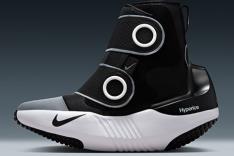
Q. Hey Gale—I'm hoping you can help answer a question. I'm relatively new to cycling and my cycling friends insist that my cycling cadence needs to be between 90 to 110 revolutions per minute (rpm). Looking at my cyclometer, I am usually around an average of 80 rpm. My friends tell me that 90 rpms is the optimal cadence, and that if I would train to spin at 90 to 100 rpm, I would be faster without changing anything else.
But when I try to spin at a higher cadence, my heart rate skyrockets and I can't last very long. Do I just need to get used to the new cadence, or am I not built to spin that fast? Aren't there riders that have lower cadences than others? Can you tell me the optimal cadence that will make me faster? - J.W.
A. You ask a good question, J.W., and it's one that has been the source of great debate for years. In Lance Armstrong's era of racing, a great amount of importance was put on high cadence. Lance claimed that his change to a higher cadence was key to his success. At the time, everyone jumped on the high cadence bandwagon. Given what we currently know about the other factors that affected Lance's extraordinary performance, cadence may or may not have had an impact.
Outside of a single individual claiming that high cadence is the key to success, what does scientific research have to say?
More: Cycling Cadence 101
What Makes the Bike Go Faster?
Boiled down, there are two basic principles that affect power output and result in increased speed: how fast you can turn the pedals, or cadence, and the amount of force you can apply to the pedals. The combination of cadence and force to the pedals generates power. One or both of these variables can be changed to increase power production.
For example, let's say you can generate 200 watts by riding at 90 rpm while applying a certain force to the pedals. You can apply less force to generate 200 watts if you increase cadence. On the other side of the scale, if you decrease cadence you'll need to increase force to the pedals to generate the same 200 watts. By increasing force to the pedals and cadence, power output increases above 200 watts.
But What About Heart Rate?
As you well know, given your higher cadence and resulting higher heart rate experiment, getting faster on the bike is not a simple matter of pushing on the pedals with more force or pedaling faster.
- 1
- of
- 2
About the Author

Gale Bernhardt was the USA Triathlon team coach at the 2003 Pan American Games and 2004 Athens Olympics. She's worked as one of the few World Cup coaches and delivered coached education training for the Triathlon Union's Sport Development Team. She has coached Olympic road racers, World Cup mountain bike riders and Leadville 100 racers. Thousands of athletes have had successful training and racing experiences using Gale's ready-to-use, easy-to-follow training plans.








Discuss This Article